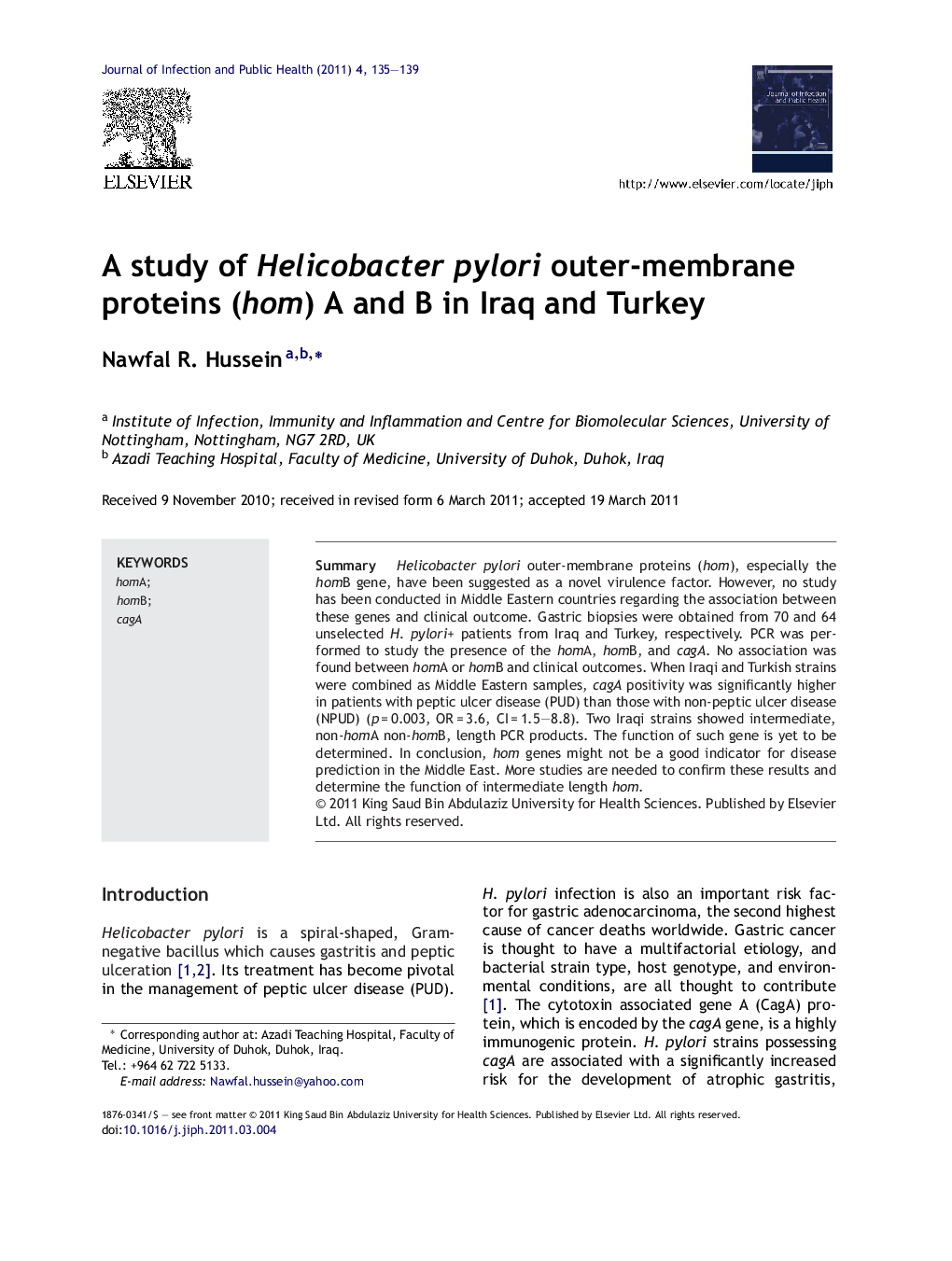| Article ID | Journal | Published Year | Pages | File Type |
|---|---|---|---|---|
| 3406121 | Journal of Infection and Public Health | 2011 | 5 Pages |
SummaryHelicobacter pylori outer-membrane proteins (hom), especially the homB gene, have been suggested as a novel virulence factor. However, no study has been conducted in Middle Eastern countries regarding the association between these genes and clinical outcome. Gastric biopsies were obtained from 70 and 64 unselected H. pylori+ patients from Iraq and Turkey, respectively. PCR was performed to study the presence of the homA, homB, and cagA. No association was found between homA or homB and clinical outcomes. When Iraqi and Turkish strains were combined as Middle Eastern samples, cagA positivity was significantly higher in patients with peptic ulcer disease (PUD) than those with non-peptic ulcer disease (NPUD) (p = 0.003, OR = 3.6, CI = 1.5–8.8). Two Iraqi strains showed intermediate, non-homA non-homB, length PCR products. The function of such gene is yet to be determined. In conclusion, hom genes might not be a good indicator for disease prediction in the Middle East. More studies are needed to confirm these results and determine the function of intermediate length hom.
